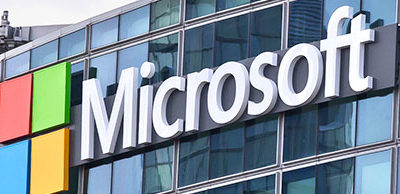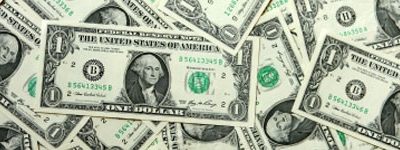%
Jubak’s Picks Performance 1997-2019
Jubak’s Picks
Buy and hold? Not really.
Short-term trading?
Not by a long shot.
So what is the stock-picking style of The Jubak’s Picks portfolio?
Click to expand...
Click to View the Jubak’s Picks Portfolio
I try to go with the market’s momentum when the trend is strong and the risk isn’t too high, and I go against the herd when the bulls have turned piggy and the bears have lost all perspective. What are the results of this moderately active — the holding period is 12 to 18 months — all-stock portfolio since inception in May 1997? A total return of 584% as of December 31, 2019. That compares to a total return on the S&P 500 stock index of 335% during the same period.
%
Top 50 Stocks Performance 2019
Top 50 Stocks
This long-term, buy-and-holdish portfolio was originally based on my 2008 book The Jubak Picks.
Trends that are strong enough, global enough, and long-lasting enough to surpass stock market averages.
Click to expand...
Click to view the Top 50 Stocks Portfolio
In The Jubak’s Picks Portfolio I identified ten trends that were strong enough, global enough, and long-lasting enough to give anyone who invested in them a good chance of beating the stock market averages.
To mark the publication of my new book on volatility, Juggling with Knives, and to bring the existing long-term picks portfolio into line with what I learned in writing that book and my best new ideas on how to invest for the long-term in a period of high volatility, I’m completely overhauling the existing Top 50 Picks portfolio.
You can buy Juggling with Knives at bit.ly/jugglingwithknives
%
Dividend Income Performance 2021
Dividend Income
Every income investor needs a healthy dose of dividend stocks.
Why bother?
Why not just concentrate on bonds or CDs?
Click to expand...
Click to view the Dividend Income Portfolio
Because all the different income-producing assets available to income investors have characteristics that make them suited to one market and not another. You need all of these types of assets if you’re going to generate maximum income with minimum risk as the market twists and turns.
For example: bonds are great when interest rates are falling. Buy early in that kind of market and you can just sit back and collect that initial high yield as well as the capital gains that are generated as the bonds appreciate in price with each drop in interest rates.
CDs, on the other hand, are a great way to lock in a yield with almost absolute safety when you’d like to avoid the risk of having to reinvest in an uncertain market or when interest rates are crashing.
Dividend stocks have one very special characteristic that sets them apart from bonds and CDs: companies raise dividends over time. Some companies raise them significantly from one quarter or year to the next. That makes a dividend-paying stock one of the best sources of income when interest rates start to rise.
Bonds will get killed in that environment because bond prices will fall so that yields on existing bonds keep pace with rising interest rates.
But because interest rates usually go up during periods when the economy is cooking, there’s a very good chance that the company you own will be seeing rising profits. And that it will raise its dividend payout to share some of that with shareholders.
With a dividend stock you’ve got a chance that the yield you’re collecting will keep up with rising market interest rates.
But wouldn’t ya know it?
Just when dividend investing is getting to be more important—becoming in my opinion the key stock market strategy for the current market environment—it’s also getting to be more difficult to execute with shifting tax rates and special dividends distorting the reported yield on many stocks.
I think there’s really only one real choice—investors have to pull up their socks and work even harder at their dividend investing strategy. That’s why I revamped the format of the Dividend Income portfolio that I’ve been running since October 2009. The changes aren’t to the basic strategy. That’s worked well, I think, and I’ll give you some numbers later on so you can judge for yourself. No, the changes are designed to do two things: First, to let you and me track the performance of the portfolio more comprehensively and more easily compare it to the performance turned in by other strategies, and second, to generate a bigger and more frequent roster of dividend picks so that readers, especially readers who suddenly have a need to put more money to work in a dividend strategy, have more dividend choices to work with.
Why is dividend investing so important in this environment? I’ve laid out the reasons elsewhere but let me recapitulate here. Volatility will create repeated opportunities to capture yields of 5%–the “new normal” and “paranormal” target rate of return–or more as stock prices fall in the latest panic. By using that 5% dividend yield as a target for buys (and sells) dividend investors will avoid the worst of buying high (yields won’t justify the buy) and selling low (yields will argue that this is a time to buy.) And unlike bond payouts, which are fixed by coupon, stock dividends can rise with time, giving investors some protection against inflation.
The challenge in dividend investing during this period is using dividend yield as a guide to buying and selling without becoming totally and exclusively focused on yield. What continues to matter most is total return. A 5% yield can get wiped out very easily by a relatively small drop in share price.
Going forward, I will continue to report on the cash thrown off by the portfolio—since I recognize that many investors are looking for ways to increase their current cash incomes. But I’m also going to report the total return on the portfolio—so you can compare this performance to other alternatives—and I’m going to assume that an investor will reinvest the cash from these dividend stocks back into other dividend stocks. That will give the portfolio—and investors who follow it—the advantage of compounding over time, one of the biggest strengths in any dividend income strategy.
What are some of the numbers on this portfolio? $29,477 in dividends received from October 2009 through December 31, 2013. On the original $100,000 investment in October 2009 that comes to a 29.5% payout on that initial investment over a period of 39 months. That’s a compound annual growth rate of 8.27%.
And since we care about total return, how about capital gains or losses from the portfolio? The total equity price value of the portfolio came to $119,958 on December 31, 2012. That’s a gain of $19,958 over 39 months on that initial $100,000 investment or a compound annual growth rate of 5.76%.
The total return on the portfolio for that period comes to $49,435 or a compound annual growth rate of 13.2%.
How does that compare to the total return on the Standard & Poor’s 500 Stock Index for that 39-month period? In that period $100,000 invested in the S&P 500 would have grown to $141,468 with price appreciation and dividends included.) That’s a total compounded annual rate of return of 11.26%.
That’s an annual 2 percentage point advantage to my Dividend Income portfolio. That’s significant, I’d argue, in the context of a low risk strategy.
Portfolio Related Posts
Selling First Majestic Silver on Friday on Reddit rally
Shares of First Majestic Silver (AG) climbed 21.38% yesterday, January 28, as silver futures climbed on a post on Reddit suggesting profit from a short squeeze on silver. “Any short squeeze in silver paper shorts would be EPIC,” a post on Reddit’s WallStreetBets forum said. “Why not squeeze SLV to real physical price,” the poster said referring to the iShares Silver Trust ETF (SLV). That ETF closed up 5.55% on Thursday. Now I understand the attraction of anything that can be touted as a potential for a short squeeze like that which has driven the shares of GameStop (GME) up 928% for 2021 as of the close on January 28, and 1538% in the last three months. But silver the commodity is actually very different from a stock and a short-squeeze looks very difficult to execute in silver.
Market sees fourth quarter GDP slowdown as good news
U.S. GDP growth slowed in the fourth quarter, gaining just 1% from the third quarter. For the full year the U.S. economy contracted by 3.5%. That makes 2020 the first time that the economy has contracted for a full year since 2009 and the Great Recession. At the bottom of that recession that economy contracted by 2.5%. 2020 is also the worst year for economic growth since 1946 when the economy shrank by 11.6% as the country demobilized after World War II. Consumer spending slowed in all 15 categories tracked by the Bureau of Economic Analysis. The sectors that had powered the recovery in the third quarter–restaurants and hotels, for instance–reversed. The growth in spending on cars and health car also slowed from the acceleration in the third quarter. So why is this good news as far as the stock market is concerned?
Microsoft blows away analyst earnings projections after close today; Apple and Facebook report tomorrow
Microsoft reported its earnings for the company’s fiscal second quarter 2021 earnings today, Tuesday, January 26, after the close. Revenue of $43.1 billion easily beat Wall Street projections of $40.2 billion. Earnings per share of $2.03 crushed expectations for $1.64 a share. Microsoft’s shares were up 1.22% in the regular session and then gained another 4.30% in after-hours trading.
Nidec tacks on 7.69% gain today on updated annual forecast and new buyback plan
Nidec (NJDCY) shares gained another 7.69% today, after the maker of electric motors for hard drives, robots, and electric vehicles, raised its annual outlook for the fiscal year that ends on March 31. The new outlook forecasts operating income of 155 billion yen ($1.5 billion) versus the older forecast of 140 billion yen. The company authorized share buybacks of up to 50 billion yen, or about 0.7% of the company’s stock.
Adding Applied Materials to my Jubak Picks Portfolio on chip shortage
As I noted in my January 13 video “4 picks for the chip shortage,” investors are looking at shortage of silicon chips that has hit the auto industry especially hard and that argues for a multi-year increase in capital spending to expand chip production at foundry companies such as Taiwan Semiconductor (TSM). As the world’s largest supplier of semiconductor manufacturing equipment, Applied Materials will see its revenue climb as a result of that capital spending. The company’s equipment can be found at almost every major step in cap manufacturing (with the exception of lithography) from chemical and physical vapor deposition to etching to defect-inspection scanning electron microscopes. The stock is up 60.04% in the last year, as of the close on January 13 with most of that gain coming in the last 3 months where the stock is up 51.9%. The shares are already a pick in my long-term 50 Stocks Portfolio where they’re up 91.8% from December 31, 2017. Today, I’m adding Applied Materials to my Jubak Picks Portfolio.
50 Stocks Portfolio member TSM reports record quarterly revenue on 5G iPhone demand
Today, January 8, Taiwan Semiconductor Manufacturing (TSM), the worlds largest contract chipmaker, reported December sales that translate into record quarterly revenue with estimated sales in the quarter climbing to $12.9 billion (361.5 NT$). (The company reports its quarter on January 14.) The projections based on December revenue amount to a 25% increase in revenue in 2020 from 2019.
2020 was a great year for dividend stocks: my Dividend Portfolio showed a return of 15.71% for 2020
My Dividend Portfolio showed a total return for 2020 of 15.71.%
Adding copper miner Freeport to Jubak Picks Portfolio tomorrow
Commodities have soared on prospects for a post-coronavirus vaccine economic recovery. And copper is one of the best commodities to own in order to invest in the recovery of the global economy–and especially the growth in the Chinese economy–as the coronavirus pandemic recedes in 2021. I already own Southern Copper (SCCO) in my Dividend Portfolio and First Quantum Minerals (FQVLF) in my Volatility Portfolio. Those stocks were up 56.83% and 77.64%, respectively, in 2020. Tomorrow, January 6, I will add shares of Freeport McMoRan Copper & Gold to my Jubak Picks Portfolio.











